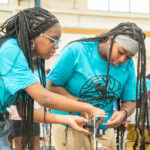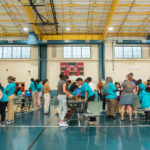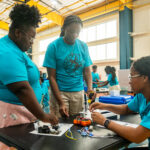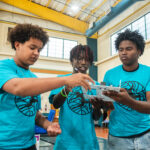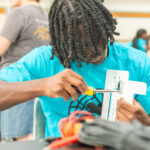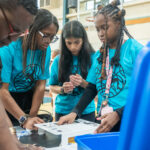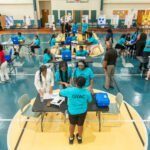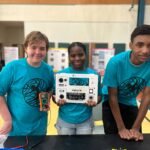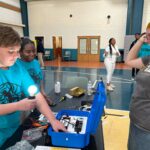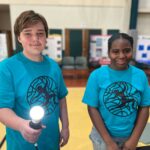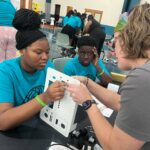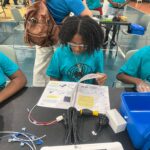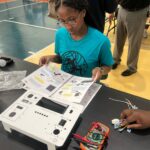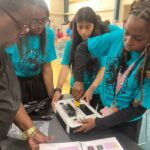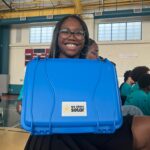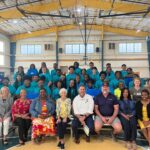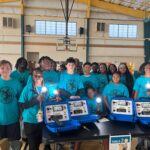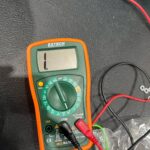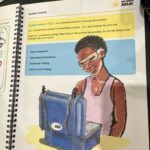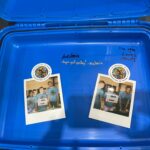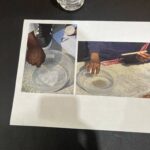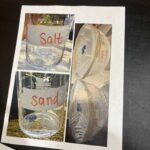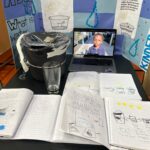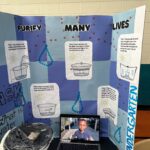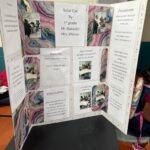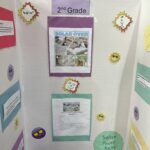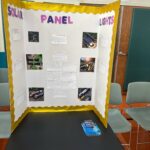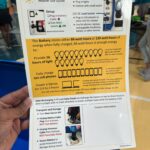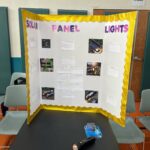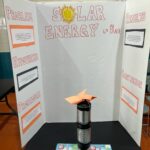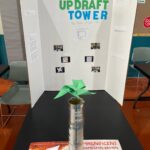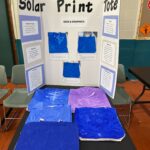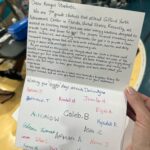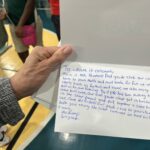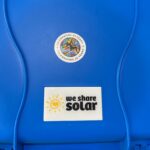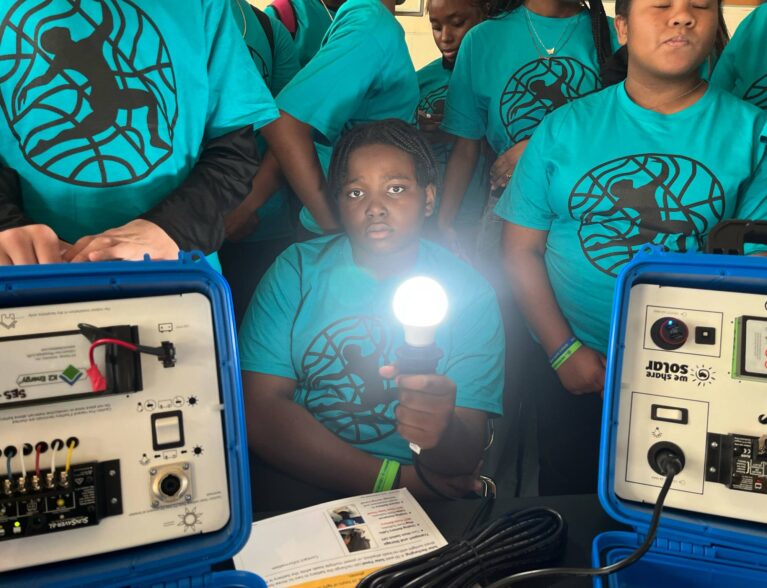
On the east coast of the African continent, nearly 8,000 miles away from Florida, sits a rural, pastoral land rooted in tradition and culture. In northern Kenya, the Samburu, also called ‘The Butterfly People,’ wear multi-colored ornaments, beaded belts and dye their hair red as a symbol of power and strength.
The Samburu speak a dialect of the Maa language, part of the Eastern Nilotic languages. The tribe often celebrates with music, singing and dancing.
But, amid the smiles and laughter, the people of Samburu struggle with the tight grip of impoverishment while lacking electricity and infrastructure. Samburu County is one of the poorest counties in Kenya, with 78 percent of the population living in poverty, according to the U.S. Agency International Development.
Now, Gifford Youth Achievement Center (GYAC) students are stepping up to become a beacon of light for schools and community centers without power in Samburu County. In March, 30 middle and high-schoolers at GYAC gathered in teams to assemble 10 solar suitcases inside the center’s gymnasium.
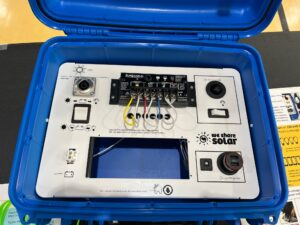
GYAC students built 10 solar suitcases that will be sent to Kenya to bring electricity to schools and community centers. PHOTO BY NICK SAMUEL
The blue solar suitcases, which each have a stand-alone 12-volt DC solar power system, will be sent to Samburu County in June. Each suitcase will power two-to-three classrooms in the northern Kenyan territory, according to GYAC.
“The fact that these are suitcases that are going to be deployed to Kenya where kids their age can use them because they don’t have electricity hopefully will make this even more engaging because they know it’s going to be used,” said Anna Gomberg, senior program manager for the We Share Solar STEM-related outreach effort.
“It’s service learning. We hope that the suitcases will not only benefit the community (of Samburu) but also benefit the kids (of Gifford) and inspire them to think of more ways to use their brains and hands to help other people.”
The solar suitcase event was part of GYAC’s Day of Service. The initiative was made possible through a partnership with The Learning Alliance, We Share Solar, The Joyful Noise Charitable Foundation which provides funding to build and deploy the suitcases, and GYAC.
It was a first-of-its-kind event at the afterschool center, combining volunteer work with STEM learning, that will help form a lasting global bond between children in Gifford and Kenya.
“The students are building complete stand-alone solar electric systems,” said Gigi Goldman, co-founder of We Share Solar, which is part of the larger nonprofit organization We Care Solar based in Berkeley, California. “Solar electric systems are made up of circuits that carry electricity generated by solar power. If a sun ray hits a solar panel, (the energy) is converted into electricity.”
Building the solar suitcase
Hands-on STEM activities are nothing new to GYAC students, thanks to programs held at the center such as the Science Institute of Discovery. Without hesitation, the young learners got to work on transforming their suitcases into solar energy systems.
“STEM work is fun, but also hard. If you keep trying, it gets even more fun,” Gomberg said. “It’s a challenging thing to pursue. It’s something you have to work at, but it’s worth it. You can help people and make good money. It’s super engaging and super rewarding. It’s challenging for your brain.”
The GYAC students used digital multimeters to conduct electrical continuity testing, or to examine if there were complete, unbroken paths for electricity to flow through the battery circuits. The pupils also tightened connections and performed short circuit testing on the devices.
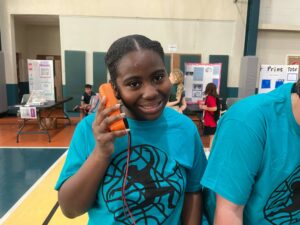
GYAC eighth-grader Melania Warner listens for beeps on the digital multimeter to check if there is a short circuit or a connected circuit. PHOTO BY NICK SAMUEL
The youth said powering the solar suitcases was a unique learning opportunity and also a chance to help those in need. The suitcases will bring electricity to schools in Samburu County, vastly improving education and communication opportunities for more than 7,000 students, teachers and residents.
“It was really fun. I learned a lot. We built solar suitcases for people in Kenya who don’t have light to help them study and learn easier,” said eighth-grader Melania Warner. “It felt good to help people. I knew this would be really important. I can put this on my resume. I can help them in the future with other projects.”
The suitcases will be expanded to include larger batteries and 100-watt solar panels when they arrive in Kenya, providing light and charging capacity, according to Goldman. The durable suitcases will be mounted on the walls of the schools and community centers.
The solar panels will be placed on top of the buildings.
“The suitcases will be quality controlled by engineers and then sent to Kenya,” Goldman said. “The importance of students participating in this event is to introduce young people to how solar energy works. Students in Indian River County live in the epicenter of solar in Florida.”
Solar energy in Indian River County
“Magnificent” and “cool” are a few words Commissioner Joe Earman used to describe GYAC students and their commitment to build solar suitcases to help underserved communities in Kenya. Earman said he was proud the students wanted to learn about solar energy.
“You are making Indian River County proud, and we’re proud of yall,” Earman told the youth.
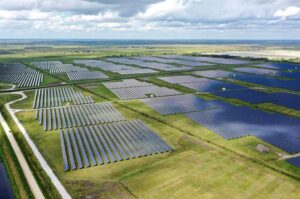
Indian River County has six solar energy centers that use the sun’s rays to generate electricity. PHOTO BY JOSHUA KODIS
Indian River County has six solar energy centers, making the rural, 170,000-population area a leader in solar production in Florida, Earman said. The centers, which bring power to homes and businesses throughout the county, are all operated by Florida Power & Light Co.
“We have more solar farms in Indian River County than any other county in the state of Florida,” Earman said. “We have a great relationship with Florida Power & Light Co.” The solar energy centers are located near the St. Johns Improvement District at the western most end of Oslo Road.
The electricity produced by the solar panels flows to substations and then is put on “the grid,” Earman said. The commissioner said the low-cost solar panels create clean energy and do not form any potentially climate-impacting carbon (emissions).
Florida is the second-largest producer of electricity in the nation and third-largest in total solar power generating capacity, according to the Energy Information Administration.
Solar energy forming clean water
One of Goldman’s goals was for students to understand how solar electricity works while building the solar suitcases. While some students assembled the suitcases, others like Antonio Jenkins and his seventh-grade classmates worked on solar-themed science projects.
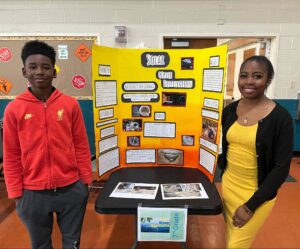
GYAC seventh-grader Antonio Jenkins and his teacher Symphani Ingram explain how clean water can be obtained from salt water and muddy water through solar distillation. PHOTO BY NICK SAMUEL
Jenkins and his teacher Symphani Ingram explained the process of solar water distillation, which uses solar energy to purify water through evaporation and condensation. Jenkins, along with his classmates, experimented with distilling salt water in one bowl and sand (muddy) water in another bowl.
The youth layered the bowls in plastic wrap, positioned rocks on the top center of the wrap and placed the bowls outside under the sunshine.
“If you wait for two hours, all of the water inside of the bowl will evaporate and the water is separated from the salt and sand,” Jenkins said. “Then you get clean water (through condensation).”
We Share Solar
Many gems can be found along the rustic lands of Samburu County. The Samburu National Preserve, with its massive, breathtaking landscapes and exotic wildlife, is located on the banks of the Ewaso Nyiro River.
This summer, students in Samburu will receive another gem – a special message from Gifford youth. In addition to the delivery of the solar suitcases, the pupils will also receive letters written by GYAC students.
The teachers in Kenya will read the letters to their pupils. Inside the suitcases, the Samburu educators and youth will also find Polaroid pictures that show GYAC youth building the solar electrical systems.
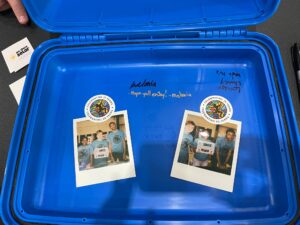
PHOTO BY NICK SAMUEL
Educators from GYAC, and five other soon-to-be-recruited schools and organizations in Indian River County, will be trained in teaching the Solar Solutionary Program to students for the 2025-2026 school year. The program is fully funded and comes with a one-to-two-week curriculum with hands-on solar equipment and a teacher training workshop.
“Helping middle and high school students have access to really engaging hands-on STEM activities is really important for developing the technical skills of our future workforce. We need these kids…if they’re interested…to pursue technical careers,” Gomberg said.
“We need a work force capable of dealing with technical issues. Having the opportunity to build (the solar suitcases) and understand the basics of electricity will hopefully inspire some of them to pursue this as a career.”
Schools and teachers interested in participating in the Solar Solutionary Program can contact Alli Pemerl, program manager at We Share Solar, at alli@wecaresolar.org.
- PHOTO BY JOSHUA KODIS
- PHOTO BY JOSHUA KODIS
- PHOTO BY JOSHUA KODIS
- PHOTO BY JOSHUA KODIS
- PHOTO BY JOSHUA KODIS
- PHOTO BY JOSHUA KODIS
- PHOTO BY JOSHUA KODIS
- PHOTO BY JOSHUA KODIS
- PHOTO BY NICK SAMUEL
- PHOTO BY NICK SAMUEL
- PHOTO BY NICK SAMUEL
- PHOTO BY NICK SAMUEL
- PHOTO BY NICK SAMUEL
- PHOTO BY NICK SAMUEL
- PHOTO BY NICK SAMUEL
- PHOTO BY NICK SAMUEL
- PHOTO BY NICK SAMUEL
- GYAC students showcase their activated solar suitcases. PHOTO BY NICK SAMUEL
- PHOTO BY NICK SAMUEL
- PHOTO BY NICK SAMUEL
- PHOTO BY NICK SAMUEL
- PHOTO BY NICK SAMUEL
- PHOTO BY NICK SAMUEL
- PHOTO BY NICK SAMUEL
- PHOTO BY NICK SAMUEL
- PHOTO BY NICK SAMUEL
- PHOTO BY NICK SAMUEL
- PHOTO BY NICK SAMUEL
- PHOTO BY NICK SAMUEL
- PHOTO BY NICK SAMUEL
- PHOTO BY NICK SAMUEL
- PHOTO BY NICK SAMUEL
- PHOTO BY NICK SAMUEL
- PHOTO BY NICK SAMUEL
- PHOTO BY NICK SAMUEL
- PHOTO BY NICK SAMUEL
- PHOTO BY NICK SAMUEL

